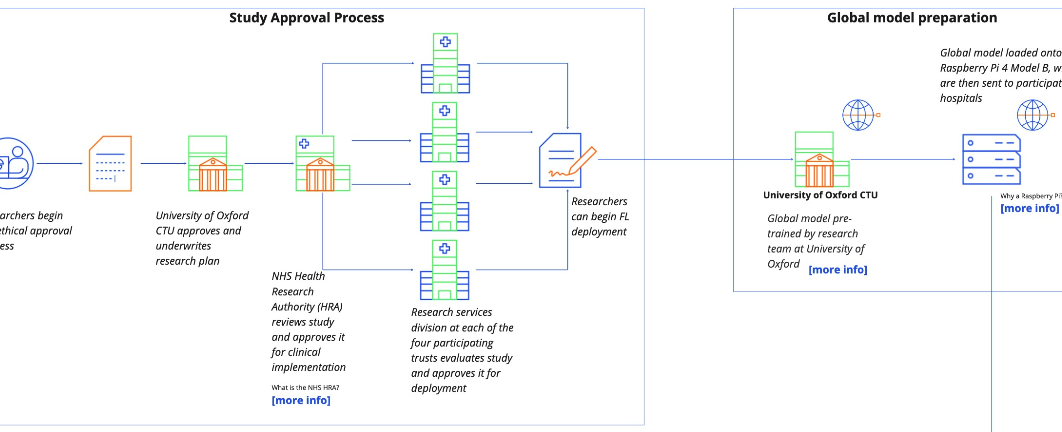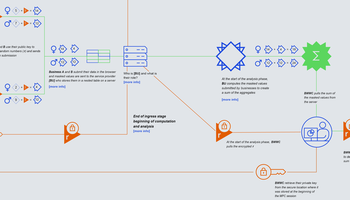
As part of the ongoing work at the ODI on privacy-enhancing technologies (PETs), we are working on a series of short explainers that provide a closer look at the ways in which certain PETs have been deployed in the real world. In these explainers we have created an interactive diagram that walks you through the processes involved in the working of each example and a corresponding write-up that provides context of the circumstances in which it was used. Together, these two items provide a practical walkthrough of why this PET was used, how it works in practice and the outcomes of its use.
In this particular explainer, we take a look at federated learning (FL). FL is a method of carrying out machine learning in a distributed manner. In simple terms, this inverts the traditional machine learning process of centralising data to train a model and instead involves the model being sent to the data to be trained locally. This removes the need for organisations to share data as only updated models are shared back with the organisation coordinating the training.
In this example, we explore the use of FL by the CURIAL-Lab team at Oxford University. They used FL to train a model they had developed to screen patients for COVID-19. The team demonstrated that this method can develop more generalisable models while also removing the need to share data between NHS trusts.
For this explainer, we also collaborated with the team at Flower Labs, who have created a hands-on low-coding tutorial in which you can build an FL set-up. Flower is an open-source framework that simplifies and streamlines federated learning tasks that offers a user-friendly solution for training various models. The tutorial applies the Flower framework to the Adult Census Income dataset to predict income based on attributes including, but not limited to, age, education and occupation.
You can explore the deployment of the FL framework with this interactive diagram.
Explore the FL framework (Kumu)
For more information on the context in which this technology was used, how it was developed, the challenges that were encountered and overcome in setting it up and the impact that using this technology has had, please have a read of our write-up.
We hope that you find these resources helpful and that they inspire your curiosity around these novel technologies. If you are currently using or considering a PET and would like to discuss this with the PETs programme team, please get in touch with us at [email protected]



